Traditional music in South Africa
By Kagiso Mnisi
The distinction between traditional and modern or popular implies that traditional music is somehow primitive, less evolved or less popular; but this is not the case. Modern history and market sensibilities have attempted to place African spiritual or traditional music into palatable ‘world music’ categories for foreign ears, reducing the music to a marketable and definable ‘essence’. This fails to take into consideration that traditional music is dynamic and does not operate in isolation - it spears forth just as much as it boomerangs back. Like modern popular genres, traditional music continues to evolve.
 Madosini
Madosini
Traditional music in South Africa has been complicated by the country’s history of entrenched racism, embodied in the system of apartheid and the policy of separate development. Until the dawn of democracy in the early 1990s, the government attempted to classify and separate all citizens in the name of cultural purity. Black South Africans were divided and defined according to ethnic groups. Many were forced to live in homelands, where radio music broadcast by the South African Broadcasting Corporation (SABC) played a central role in promoting apartheid ideology, with each group encouraged to listen to their ‘own’ station. Musicians were forced to comply, recording music that was defined by the ethnicity of the artist – to the point where albums covers were labeled, for example, ‘Zulu’, ‘Sotho’ or ‘Venda’. Any mixing of languages or collaborations between artists of different groups was prohibited. The presence of whiteness in the music narrative also provokes issues of what it means to 'discover' or 'pioneer'. White ethnomusicologists such as Hugh Tracey, credited as the first to record traditional South African music from as early as the 1920s, and John Blacking made local folk available to a global ear, although much of the music had been performed (but not recorded) for many generations before that.
Given South Africa’s rich cultural diversity and the importance of music to all its people, it is not possible to cover all traditional genres and artists in detail. Instead this essay simply aims to provide an overview of its main variations, touching on its originators as well as those who continue to draw on it for inspiration.
Music of the Khoisan, Goema and Vastrap
The original inhabitants of Southern Africa were the Khoi and San people, collectively known as the Khoisan. Their music is largely characterised by polyphonic chants, not unlike that incantations of the amaXhosa. Music played a central role in their rituals. For the Khoisan music is a means to transcend to a cosmological existence where engagement with the ancestors is the intent. Their ‘trance dance’ mimics the movements of animals such as the antelope. One of the main artists to revisit the way of the Khoisan is Pops Mohamed. His motivation for doing so in the market domain was to retrace his own ancestry. The same has also been seen in contemporary hip-hop artists such as Quintin ‘Jitsvinger’ Goliath and Richard ‘Quaz’ Roodt, who through rapping reach out to their deepest roots.
Khoisan rhythms influenced the coloured people of the Cape, helping to forge the carnival sound known as goema. In his column in the late 1960s for The Cape Herald, pianist Abdullah Ibrahim (then Dollar Brand) wrote about goema as an essential coloured artform in Cape Town. Ibrahim relayed that his own style of playing drew from folk traditions of "the doekums and the Coons." To Ibrahim, it’s a narrative that urged coloured people of the Cape to be proud of their roots. Goema is thus rooted in the collision of cultures, including Malay and Khoisan. It also overlaps with the traditional vastrap, langarm or tiekiedraai rhythms favoured by Afrikaners. The goema sound is still celebrated today. The annual Kaapse Klopse festivities on the 2nd of January, known as Tweede Nuwe Jaar (second new year), see colourful minstrel parades take to the streets of Cape Town. Mac Mackenzie, a founding member of The Genuines and The Goema Captains, is one of the few musicians to remain dedicated to the goema sound.
KwaXhosa
The amaXhosa are a nation whose subgroups include the amaBhaca, amaFengu, amaMpondo and amaThembu. All these groups have their own distinct ways of musical expression rooted in the oral tradition. Women are central in making music. One example of this would be the umngqungqo dance performed by married woman at the intonjane ceremony marking girls' coming of age. At weddings, umbholorho (traditional songs) are accompanied by dancing known as umdudo (from the verb ukududa). Other prominent dances include ukuxhentsa, performed by girls and by traditional healers during their ceremonies, and umguyo (or ukuguya), performed by boys during their traditional initiation to manhood.
One of the most revered traditional musicians is Madosini. Born in Mthatha in the Eastern Cape, she is one of a few remaining artists of her generation keeping the torch burning for traditional Xhosa music, specialising in overtone singing and composing for indigenous instruments such as the uhadi (music bow), umrhumbe (mouth bow) and isitolotolo (Jewish harp). Madosini has mentored other Xhosa speaking mainstream artists such as Thandiswa Mazwai and Camagwini. Dizu Plaatjies’ group Amampondo has since the 1980s also helped to put the traditional music of the amaXhosa on the map.
Ndebele
IsiNdebele is a creole language which contains parts of every other tongue from South Africa. It multi-faceted nature is manifested through a variety of musical instruments such as the mouth bow, isighubu (drums) and isiginxi (guitar). Within a mainstream context, the guitar has been wielded to great effect by Ndebele martriarch Nothembi Mkhwebane. Hugh Masekela's blues of migration in ‘Stimela’ also feeds from this heritage. With cow bell in hand, Masekela laments, "Stimela si hamba nga malahle... sangi lahla kwa Guqa" - loosely translated as "the steam train left me at Guqa [a place of employment prospects in Mpumalanga], where I will be away from family for a while." More recently, the kwaito generation has widened its scope through a collaboration between Oskido and Candy on a song called ‘Tsa MaNdebele’. The song is sung in SeLobedu, Candy's native tongue, a derivative of the Ndebele language mostly spoke in the Limpopo region.
XiTsonga
Tsonga people resided north of South Africa (Mozambique and Zimbabwe) before migrating into what was known as Transvaal in the 18th century. In the wake King Shaka's campaign amid the Mfecane (or Difecane), general Soshangane was ordered to conquer the group. One view is that when this occurred, the name Amashangane was imposed upon them. Another is that the name comes from derogatory term Amashiya'ngani, meaning those who left children behind when attacked. The terms Shangaan and Tsonga thus came to be used interchangeably. The Vatsonga boast a selection of traditional instruments such as the xitiringo (flute), mohambi (xylophone), xipendana and mqangala (mouth bows), larger bows such as xitende and xizambi, as well as numerous other horns, rattles and whistles. These are used in ritual ceremonies such as khomba (girls’ initiation) and mancomane (exorcism ).
The severity of the SABC in perpetuating apartheid tribalism had a major effect on XiTsonga music. The only station that kept the fires burning was Radio Tsonga, today known as Munghana Lonene FM. Despite the restrictions, XiTsonga artists such Thomas Chauke & the Shinyori Sisters and Joe Shirimani were stars. The language also made a mark on the popular music of the 1980s known as bubblegum, thanks to Dan Tshanda and his band Splash. ‘Shangaan disco’ emerged as part of this scene, with its undisputed king being the late Paul Ndlovu, followed by Peta Teanet. After apartheid, artists such as Penny Penny and Ester M continued on Ndlovu’s path, furthering blurring the lines between traditional and disco. Music in the language got acknowledged by hip-hop artists such as Amu, Spex and Mushangani. In recent years American and European dance culture has latched on to the frantic beats and synths of Tsonga music, coining the term ‘Shangaan electro’. DJs such as the Berlin-based Zhao have started to include it in their sets.
Basotho, Batswana and Bapedi
The mountain kingdom of Lesotho bred many bands rooted in the music known as Famo, which is story telling accompanied by an accordion and oil-can drum. Early incarnations of famo also used instruments such as the lekolulo (flute) and setolo-tolo (mbira). As with other groups, famo was often heard during initiation ceremonies and other celebrations. One with the biggest commercial successes to come from Lesotho was Uhuru, later known as Sankomota, who emerged in the 1980s. Its members included Moss Nkofo, Tsepo ‘The Village Pope’ Tshola, Frank Leepa, Moruti Selate and Black Jesus. The band's narrative revolved around self-empowerment and the Basotho way of life on songs such as ‘Bakubeletsa’. Modern Sotho music has also found a home in hip-hop through Kommanda Obbs and Optical illusion, whose famed 'He Ke Fihla,' is a call to stand one’s ground.
Related to the Basotho are other groups such as the Batswana. Mmino Wa Setswana, as their music is known, has been catapulted to world stages through the popular hit song ‘Kulenyane’ by Botswana's Cultural Spears, marked by clapping rhythms and call-and-response vocals. A more recent incarnation of Tswana music is Motswako, a type of vernacular hip-hop favoured by rappers such as Khuli Chana and HHP.
Bapedi are another group of people residing in the northern parts of South Africa. Sometimes referred to as Northern Sotho, this is a narrow view by colonial historians since Bapedi are a tribe with many groups, concentrated in the Limpopo region. Bapedi music has traditionally been characterised by flutes and a plucked reed instrument called dipela. Musicians later adopted instruments such as the Jew’s harp and the German autoharp to create music known as harepa, regarded as typically Pedi. Harepa did not achieve mainstream success in South Africa, though there was a brief boom in the 1970s thanks to singer Johannes Mohlala. The peak of Pedi musical expression is arguably the Kiba genre, which has transcended its rural roots to become a migrant style. It is typically played by an ensemble of men playing dinaka, open-ended flutes of various pitches. Alternatively, a group of women sings what is known as kosa ya dikhuru (knee-dance music), characterised by chanting and a traditional kneeling dance that is also employed by other cultural groups. Also generally sung at parties or during celebrations such as weddings, other features of Pedi music include call-and-response vocals and an ensemble of meropa (drums). Undoubtedly the most prominent practitioner of Kiba is Dr Sello Galane. His Free Kiba series of albums attempts to broaden and detribalise the genre by adopting new instruments and various African languages.
Zulu Maskandi and Isicathamiya
The ‘neo-traditional’ genre most closely associated with the amaZulu is maskandi, which emerged in the late 1960s played by migrant workers living in hostels and compounds (enkomponi) near mines. Their music reflected felt a nostalgic yearning for home and was typically played on guitar and by men. Bucking this trend was the late Busi Mhlongo, whose last album Amakholwa explored the connection between maskandi and faith, drawing on gospel, rock and funk influences. While maskandi and gospel address similar themes of yearning for a better life and overcoming hardship, they are stylistically not related. Instead a closer connection between traditional Zulu music and gospel is isicathamiya, a type of acapella gospel music sung by choirs, made famous internationally by Ladysmith Black Mambazo. More recently rapper Zulu Boy managed to fuse traditional Zulu influences into his own brand of hip-hop.
Traditional influences on 20th century popular music: Marabi, Kwela and Mbaqanga
In the first half of the 20th century, multicultural hubs sprang up in major cities, such as Sophiatown in Johannesburg, District Six in Cape Town, Marabastad in Pretoria and Umkhumbane in Durban. From these urban hubs emerged successive music genres, such as tshaba-tshaba and marabi, that bridged the gap between traditional influences and contemporary international trends, particularly jazz. By the 1950s marabi was a favourite at shebeens selling illegal booze. One of the classics from this era is ‘Meadowlands’, written by Strike Vilakazi about the destruction of Sophiatown and the subsequent forceful removals to Meadowlands, Soweto. Some of the stars of the day were Dolly Rathebe, Miriam Makeba, Dorothy Masuka, Thandi Klaasen, Abigail Kubeka, The Manhattan Brothers and The African Inkspots. Kwela was characterised by its use of the pennywhistle and became famous around the world in the 1950s. Its leading protagonists were Spokes Mashiyane, Lemmy ‘Special’ Mabaso, Aaron ‘Big Voice’ Jack Lerole and Allan Kwela. In the 1960s emerged a new genre, mbaqanga, with roots in traditional Zulu music but also drawing on numerous other influences to form a distinctly urban South African sound. It was South Africa's answer to the American big band or swing sound. Producers like West Nkosi are synonymous with the genre, which continues to be popular in South Africa thanks to bands like the Soul Brothers.
Venda Music and Philip Tabane’s Transcending Ethnicity in Traditional Music
Venda music is referred to as nyimbo dza Vhavenda. It consists of the repetition of basic patterns, with subtle melodic and rhythm variations that take into account the skill of the musicians and the response of the audience. Music is essentially a social activity. Rhythm is key, and traditional Venda drums such as the ngoma, thungwa and mirumba are typically played by women. Similarly to the music of the Bapedi, a wide variety of reed and bamboo pipes are also used, named according to the note they produce, or combined in a set called mutavha. The most common traditional song and dance of the Venda people is known as Tshikona, and is performed at weddings and other ceremonies. Malende is another popular kind of Venda music and dance that is associated with social celebrations. Venda musicians also have an affinity for reggae music, such as Colbert ‘Harley’ Mukhwevo, who began recorded for SABC radio in the early 1980s, and more recently Tshidino Ndou.
During narration or praise-singing, a single-tone horn bellows - hulidza. Hulidza, literally meaning to “makes it cry”, has on countless times been linked to Philip 'Doctor Malombo' Tabane, although the musician himself refutes this. Tabane has over many decades forged a new traditional genre known as Malombo music, which draws heavily from Venda influences. Sello Galane's doctoral thesis on Tabane emphasised his stance: "Malombo is not just music … it is a sociocultural institution that comprises song, dance, dramatic elements of performance, religion and a way of thinking." Tabane himself, in a recent interview with Rolling Stone SA, re-iterated: "Nobody can play Malombo music unless you were raised within a family tradition of healers." Malombo is the music of the ancestors, coming from a cosmic source, and not the result of particular ethnic genres. When performing on stage Tabane is the embodiment of ancient incantations that transcend mere language and genre.
This essay attempts to show that the traditional music of South Africa is part of a bigger diasporic narrative and not confined to a specific time or place. It tells a story that spans generations, from a time of rituals to dispossession, migrancy and urbanisation. This is indicative of a progression in the story, rather than the widely held sentiment that traditional music has been tainted or watered down by more modern or foreign influences. The music marketplace and industry award ceremonies such as South African Music Awards (SAMAs) and South African Traditional Music Achievement Awards (SATMAs) have since their inception attracted the notoriety of an apartheid-styled division in how they represent and acknowledge traditional genres. But their mere existence underlines the fact that so-called traditional music is still alive and well, and still evolving. The music has persevered from ancient times to be reinterpreted by innovative musicians like Tabane, Mhlongo, Galane and others. It can also be heard in today’s young stars such as Thandiswa Mazwai, Zulu Boy and Kommanda Obbs. It is a music of an evergreen people of storytellers that have lived throughout an eventful history, despite many of its distortions.






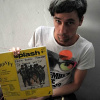


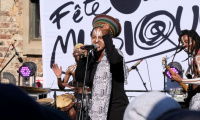




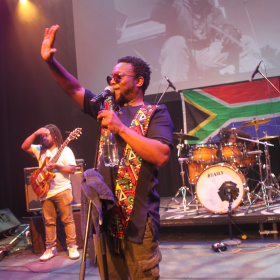

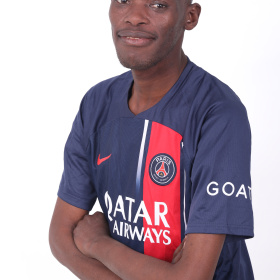

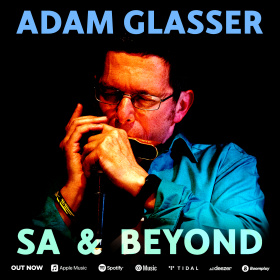
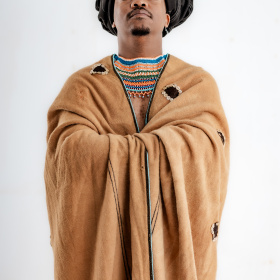

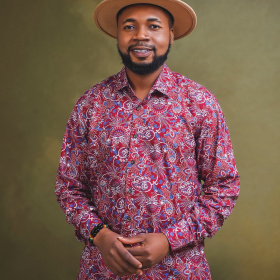
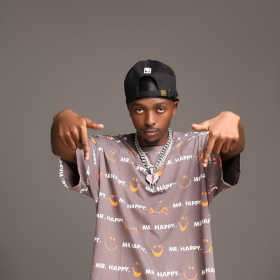

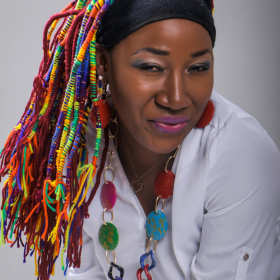





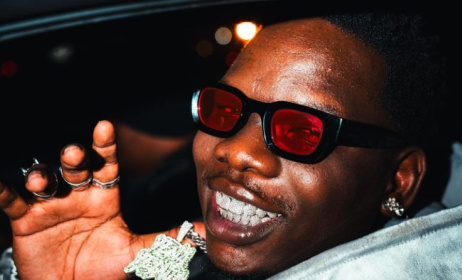
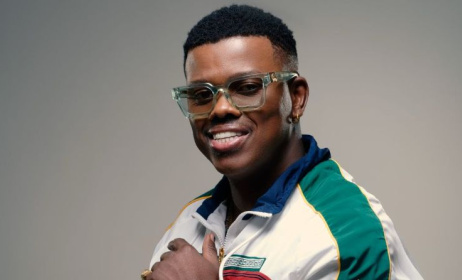



Comments
Log in or register to post comments